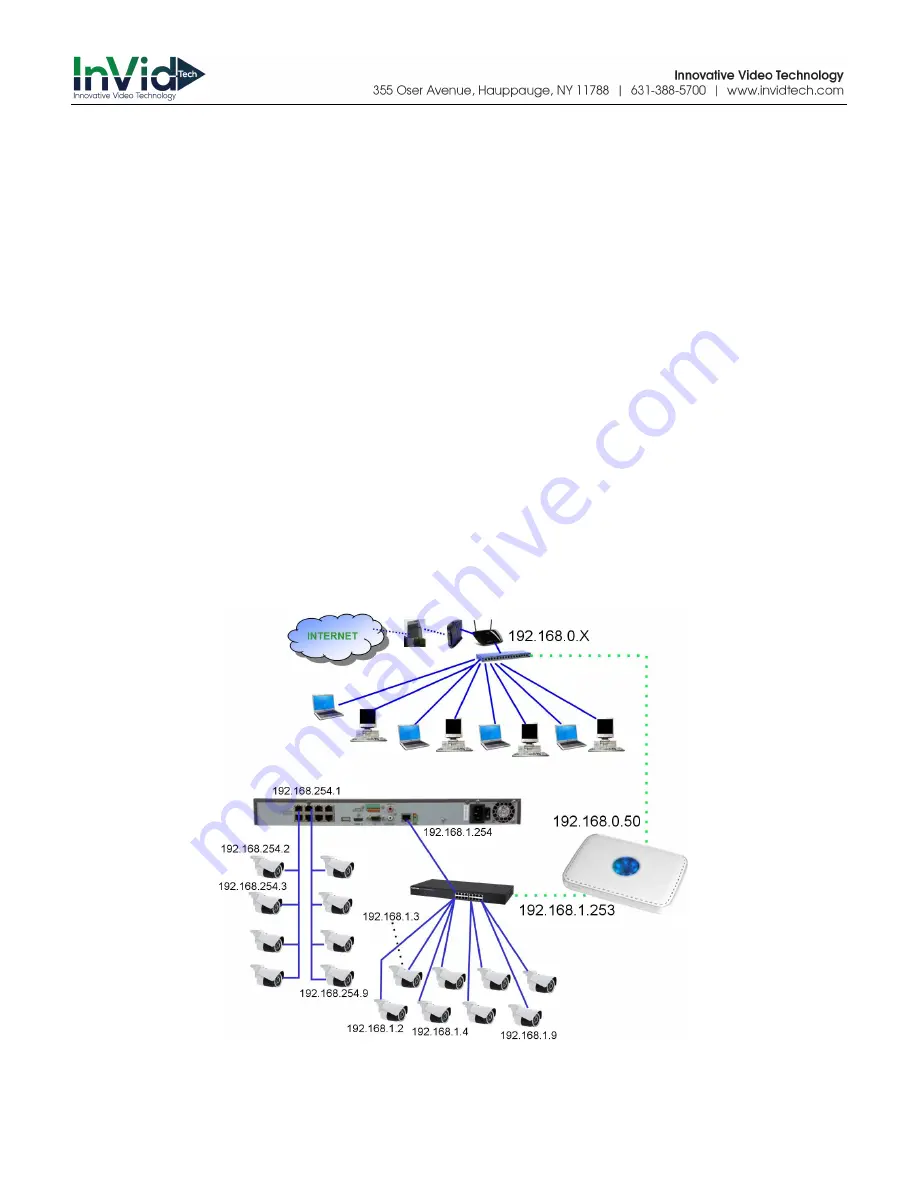
UN1A-16X8 and UN1A-32X16: Going beyond the Plug-and-Play port count
4
While this may be possible, it is unlikely to work and may be unreliable. IF the existing network happens to also
use the same addressing scheme as the LAN/WAN port on the NVR (e.g. 192.168.1.X), the two networks can be
joined. However, there is nothing to prevent two devices from trying to use the same IP address (an address
conflict). Camera network address are assigned by the NVR without regard to any other constraints. The DHCP
host on the existing LAN also hands out DHCP addresses that might duplicate/conflict with camera addresses.
There may also be manually assigned static IP addresses on that other network which conflict with the NVR itself
or with the IP cameras (initially, or at some time in the future).
If the addressing scheme on the two networks is different, no communication between them can take place.
Trying to directly co-join these two networks is likely to be more trouble than it is worth in the long term. Still,
the NVR needs a path to the Internet, and perhaps needs to be accessible from some or all of the PCs on the
home/office LAN/WAN.
One simple way to connect two networks with different network numbering schemes is a router. A simple
home/office router will likely suffice. The “LAN” side of the router connects to the auxiliary camera network
switch. The router LAN port is assigned a compatible IP address (e.g. 192.168.1.253). The “WAN” side of the
router is connected to the home/office LAN/WAN and is assigned a static IP address compatible with that
network (e.g. 192.168.0.50). Since routers function as DHCP hosts, to avoid conflicts the DHCP function in the
additional router should either be disabled, or restricted to a very limited address range, e.g. 192.168.1.245~
192.168.1.252. This DHCP capability aids in the connection of wired or wireless PCs and other devices to that
NVR/camera network for monitoring and diagnostic purposes.
Since routers also function as firewalls, we need to make the NVR accessible from the home/office LAN/WAN
side. One way to do this is to indicate the IP address of the NVR (192.168.1.254) as being in the “DMZ” for the





